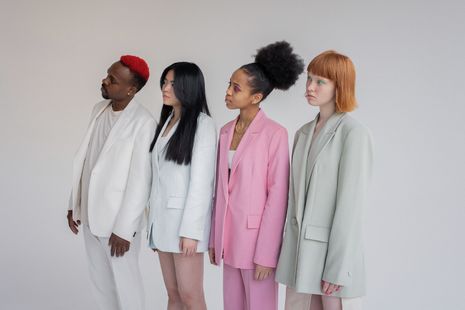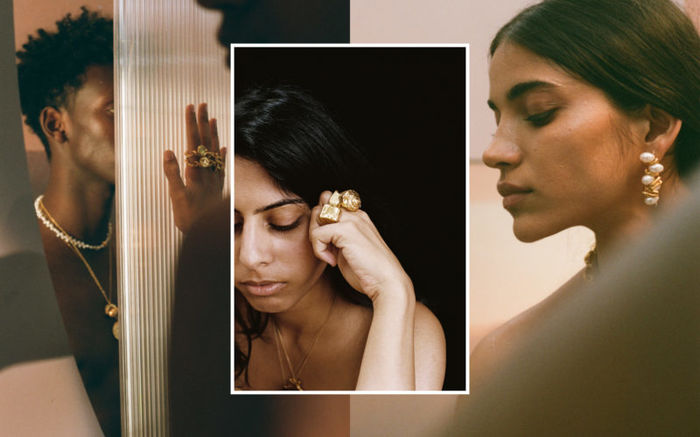We need to talk about fashion
Fashion Columnist, Tonye Igali, begins her series by laying bare how fashion’s problem is not systemic racism or sustainability but within its very definition

Diversity is the talk of the fashion world at the moment. Conde Nast just announced their plans to launch a Philippine edition of their global fashion magazine Vogue, and British Vogue’s February cover featuring nine African models was hailed as “redefining what it means to be a fashion model”. The pandemic has created an unstable landscape in which all players, big and small, are fighting for our attention and our money. And the winners it seems, are those who are embracing ‘diversity’ — whatever that means. Much has been made of fashion’s ‘racial reckoning’ in light of 2020’s global protests for racial justice, which prompted revelations of injustice and indignities suffered by people of colour at all levels and branches of the fashion industry. The subsequent outrage and demands for restitution prompted promises from the industry to do better — although two years later, the jury remains out on to what extent that promise has been kept. However, the fashion industry’s problems run much deeper than a desperate need for representation at all levels and a healthy work environment for people of colour. If lasting change is the goal, then it is necessary to dissect the idea of fashion itself, and the meanings it creates for how we see the world.
“Markers of progress are presented as part of the expansion of fashion’s Western core to include the periphery, rather than necessary global recognition of non-Western innovation”
The academic discipline of Fashion Studies has begun to grapple with the ways in which it is, as a discipline, rooted in coloniality. These decolonial discourses dissect the colonial dichotomy between ‘fashion’, seen as the exclusive purchase of the West, and ‘traditional dress’, a universal category for the colonial ‘Other’ that exists outside of time. While fashion is understood as a symbol of a constant cycle of progress and change, traditional dress is static and unchanging. This dichotomy does not just exist in Fashion Studies but is an underlying assumption of the industry at large. Fashion, according to the Oxford dictionary, is defined as ‘the latest style of clothing, hair, decoration or behaviour’. To be ‘in fashion’ is to be ‘popular and considered attractive at the time in question’. Temporality is key to our understanding of what is and is not fashionable, which is why it is concerning that processes of adornment for most of the world are consigned to an archaic past without history.
There is a clear distinction between those who are within a linear progression within modernity and those outside it who are not influenced by the Greco Latin heritage of the Enlightenment and the Renaissance. For example, Nigerian fashion and lifestyle blog BellaNaija has meticulously documented the innovations in aso ebi, a West African clothing practice emanating from the Yoruba ethnic group that signifies close kinship during festive occasions. This practice is still limited to the label of traditional dress despite being a reflection of current trends. That the fashion world has made large strides towards diversity in fashion media, design and modelling conceals the power relations that are central to fashion’s processes; these markers of progress are presented as part of the expansion of fashion’s Western core to include the periphery, rather than necessary global recognition of non-Western innovation. Angela Jansen traces the historical narrative of fashion as part of a lineage of modernity beginning with the enlightenment period and progressing to the present. The rest of the world exists outside this singular history, frozen outside of time and absorbed into the West’s grand vision of eternal progress when deemed brilliant enough.
“What is important is contemporaneity; to see those outside the West as equal actors in the present, also capable of creative production, deserving of having their work considered not as a response to a Western canon but as artistic production within its own historical and social context”
If the fashion industry is serious about tackling systemic racism and achieving sustainability, it needs to come to terms with its roots in modernity and, by extension, its entanglement with coloniality. The perils of the fashion industry, with its notorious mistreatment and outright abuse of workers, endless extraction of natural resources and pollution of the environment is a direct consequence of the logics of modernity that has spurned a commitment to constant ‘progress’ at the expense of everything else. The damage this does is not just environmental but ontological, dehumanising those outside the West as either accessory to Western progress or objects for fetishisation. Recurring debates around cultural appropriation such as Marc Jacobs use of locs on mostly white models in 2016, or the fashion industry’s embracing of head coverings this Autumn Winter season come down to this. While non-Western people can be subject to ridicule, discrimination and even criminalisation for their outward presentation, these same processes of adornment can become a fashion statement when the Western fashion establishment decides, stripping it of all cultural and religious significance and transforming it into a disposable commodity in the process.
Efforts towards the inclusion of people of colour and sustainability are being made, but these do not tackle the root of the problem — that the idea of constant ‘progress’ is a relic of colonial thinking, unsustainable and necessitating the exploitation of both people and natural resources. The way forward is not an expansion of fashion’s colonial core or a recognition of the Global South as more than a receptacle for the West’s expired fashions. The toxic commitment to fleeting never-ending cycles of ‘new’ collections produced under constant threat of burnout and disposed of once they are out of ‘season’ is nothing to aspire to. What is important is contemporaneity; to see those outside the West as equal actors in the present, also capable of creative production, deserving of having their work considered not as a response to a Western canon but as artistic production within its own historical and social context. We need to stop just widening the West’s vision to include non-Western fashion and start allowing for completely new visions and global players. Once this paradigm shift is implemented all of the injustices rife in the fashion industry from mistreatment of workers to appropriation to environmental abuses become unjustifiable and untenable and the need for something better to take its place must arise.
 News / Cambridge academics stand out in King’s 2026 Honours List2 January 2026
News / Cambridge academics stand out in King’s 2026 Honours List2 January 2026 Interviews / You don’t need to peak at Cambridge, says Robin Harding31 December 2025
Interviews / You don’t need to peak at Cambridge, says Robin Harding31 December 2025 Comment / What happened to men at Cambridge?31 December 2025
Comment / What happened to men at Cambridge?31 December 2025 News / AstraZeneca sues for £32 million over faulty construction at Cambridge Campus31 December 2025
News / AstraZeneca sues for £32 million over faulty construction at Cambridge Campus31 December 2025 Features / “It’s a momentary expression of rage”: reforming democracy from Cambridge4 January 2026
Features / “It’s a momentary expression of rage”: reforming democracy from Cambridge4 January 2026











